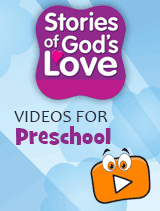I know, I know. This is a lot of talking about ourselves instead of talking about kiddos. We can’t pour from an empty cup, and we also can’t teach what we don’t practice or model ourselves. So my challenge this time around is to practice what we preach–we are working on reprogramming our reflexes this summer to minimize the cycle of stress and set ourselves up for success this fall.
Summer is a great time to practice and develop our own skills so we can pull them out of our toolbox when we are challenged with the children. Just like the gratitude jar, you can create a small toolbox or visual reminder of the tools you have to help you support the children in your classroom. Maybe these are mantras you write in a fancy script to post on the wall, or a literal box of symbolic tools to remind you that two things are true: you can do hard things, and you can also make mistakes. God has given you the grace to do just that – make mistakes and learn from them and help children learn with you as their model in this process.
Here is the toolbox for you–the three things you need to help you when you are triggered or are losing your cool with children. Again, our goal is to acknowledge and practice these skills when we are calm so they become reflexes when we need them most.
- Band-Aids – there is no relationship in our classroom between children that is hurt beyond healing. In moments when we may yell at students, or lose our patience, it is important that we practice regrouping and repairing. Just like a first aid kit helps when we have been hurt, let the Band-Aid remind you that you can help heal any hurt you may have caused, intentionally or unintentionally. Repair your relationships with students by owning up to upset, stating that you were feeling upset or frustrated and that you want to repair the damage that was done. This can be through a handshake, a high five, or a hug.
- Mirror – look at yourself and wonder, what is this feeling trying to tell me? I heard someone say instead of thinking, “what is wrong with me” or “why did I do that,” to ask “what is this anger, this feeling, this reaction trying to tell me?” This helps us to focus on Dr. Bruce Perry’s idea of what happened to you instead of what is wrong with you. This mindset shift means we understand that behavior has meaning, and sometimes we are unaware of what caused us to react in a certain way. This may mean we reflect on what boundary has been crossed, what button has been pushed, or what memory has been recalled that has made us respond in a certain way. When we look at what a feeling is telling us, only then can we understand how to reduce our upset when it eventually happens again?
- Balloon – ok, I will admit, this one seems the silliest. But think about what happens when a balloon is overinflated–it bursts, making a loud and scary noise. What happens when a balloon is filled up with air and then is able to deflate? Think of the silly sounds that a balloon makes instead. This balloon can be your reminder to take a balloon breath when you feel yourself getting upset, but before you explode. Put your hands on your head, and interlace your fingers. As you take a deep breath in, raise your hands like a balloon filling up with air. When you are ready, keep your fingers interlaced, and exhale; if you’re feeling silly or need to really burn off some tension, blow raspberries with your lips to mimic the sound of a deflating balloon. Repeat up to three times–and remember that children love this breathing strategy!
Here is your gentle reminder that your goal is not to be perfect, but rather to model for the children in your classroom what to do when you have made a mistake. We can normalize losing our cool a little bit or making a mistake by narrating what we are doing or feeling, so children feel comfortable doing the same.
As you put together your toolbox and include some of your own silly items to include, remember: You haven't chosen this profession; you were chosen for this vocation. Give yourself some time to relax, and prepare for the next chapter in this journey.
 About the Author
About the AuthorAmy S. Kronberg is an early learning consultant and adjunct professor at the University of Dayton. Mrs. Kronberg began her work in early childhood education at the University of Michigan-Dearborn Early Childhood Education Center, where she learned about the Reggio Emilia philosophy, child-centered curriculum, and playful learning environments. She moved to Dayton in 2013 to complete her Masters of Science in Education, studying early childhood leadership and advocacy so she could learn to support children and families in understanding the value of and celebrating play. She is currently all but dissertation in Educational Leadership at the University of Dayton and specializes in early learning consulting for local nonprofits, infant and toddler learning, and social-emotional development.
Product Highlight
Stories of God's Love My Emotions Video Series
Religious Education for Ages 4-5 and Kindergarten
The My Emotions Video Series corresponds to a unit or chapters in Stories of God’s Love. Teachers and catechists may use the videos in the classroom or virtually, or adults may use the videos with children at home. Each video focuses on emotions that young children experience to help them identify, define, and use their feelings in appropriate ways. The videos help the children understand that they are the shepherds of their own emotions. Each child is responsible for caring for his or her feelings in a healthy way.
The Stories of God’s Love: My Emotions Videos are research-based, utilizing the work of the Collaborative for Academic, Social, and Emotional Learning (CASEL) and the National Association for the Education of Young Children (NAEYC) on building social and emotional skills. The videos may be accessed through Flourish, RCL Benziger’s online platform. A one-year license includes resources for adults both in the classroom and at homes, such as the printable Feelings Chart and Emotion Cards seen in the videos.
